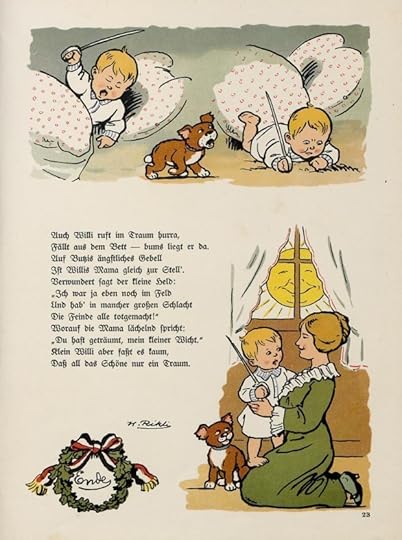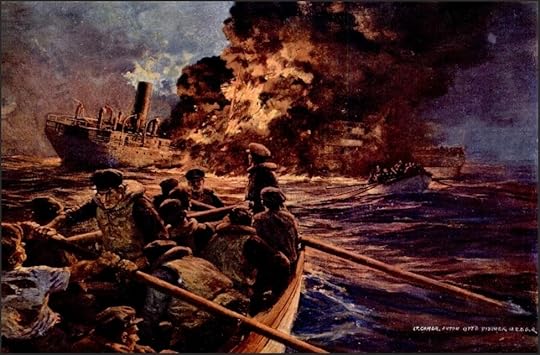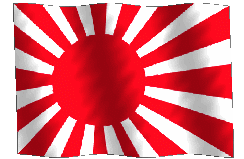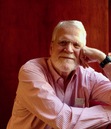Mark Scott Smith's Blog: Enemy in the Mirror, page 119
January 15, 2014
Enemies of WWII – Home Front
Images used with permission from: born1945 and Remembering the USA in the 1940s
The post Enemies of WWII – Home Front appeared first on Enemy in the Mirror.
January 13, 2014
Wartime Rationing Begins in the USA – 1942

1942; Wikimedia Commons
In January 1942, the first consumer items to be rationed by the Office of Price Administration were tires.
At the same time, the War Production Board ordered the temporary end of all civilian automobile sales. By February 1942, only certain professions, such as doctors and clergymen, qualified to purchase the remaining inventory of new automobiles.
Automobile factories ceased the manufacture of all civilian models by early February 1942 and converted to producing tanks, aircraft, weapons, and other military products.
Typewriters were rationed in March, and bicycles in May.
The post Wartime Rationing Begins in the USA – 1942 appeared first on Enemy in the Mirror.
January 10, 2014
Japan’s Bicycle Infantry

Japanese Bicycle-mounted Troops in the Philippines; Wikimedia Commons
In WWII, bicycles were quiet, flexible transport for thousands of Japanese troops who used them to surprise and confuse defenders.
In 1937, 50,000 Japanese bicycle troops participated in the invasion of China.
In 1941, the Japanese army rode bicycles through Malaya to capture Singapore.
On bicycles, Japanese troops moved faster than retreating Allied Forces. Often spurning main routes, Japanese troops travelled along plantation roads, native paths and over improvised bridges to surprise Allied troops defending the expected roads and river crossings.
The post Japan’s Bicycle Infantry appeared first on Enemy in the Mirror.
January 8, 2014
A Child Dreams of Battle – 1915

https://twitter.com/GERArmyResearch/status/420278136392007680/photo/1
In this 1915 German children’s book the child has just awakened.
He tells his mother “I was just in the field and killed all the enemy in some great battle.”
She smiles and tells him it was just a dream. But he can hardly grasp that all that beauty was just a dream.
via: Rob Schäfer@GERArmyResearch. Historian, Author, German military history 1848-1945, Historical Consultancy, Military Research & Genealogical Services. http://gmuhistoricalconsultancy.wordpress.com
The post A Child Dreams of Battle – 1915 appeared first on Enemy in the Mirror.
January 6, 2014
U-Boat Operation Drumbeat – 1942

Painting by Lt. Cmdr. A. O. Fischer, February 1943; Wikimedia Commons
After Germany declared war on the USA, Admiral Karl Dönitz diverted increasing numbers of U-boats from the North Atlantic to the American East Coast. The first U-boat attacks of Operation Drumbeat (Paukenschlag) commenced on January 13, 1942.
Inexperienced in modern naval war off its own coast, the USA was slow to develop effective anti-submarine warfare (ASW) techniques. Black-outs were not enforced and there were insufficient resources for convoys (which had proved effective in British ASW in the North Atlantic). Additionally, it appears that advice from experienced British experts was either rejected or ignored.
The U-boats had an enormously successful campaign they called die fröhliche Zeit (happy time) for most of 1942.
U.S. Ships Sunk or Damaged on East Coast of U.S, and Gulf of Mexico During World War II
East coast of U.S. 1941 (2 ships)
East coast of U.S. 1942 (121 ships)
Gulf of Mexico 1942 (42 ships)
East coast of U.S. 1943 (22 ships)
Gulf of Mexico 1943 (4 ships)
East coast of U.S. 1944 (11 ships)
East coast of U.S. 1945 (16 ships)
The post U-Boat Operation Drumbeat – 1942 appeared first on Enemy in the Mirror.
January 3, 2014
▶ 1942 Rose Bowl Moved to North Carolina
Fearing a Japanese attack on the West Coast, the Rose Bowl (traditionally in Pasadena, CA) was played in Durham, N.C. on January 1, 1942. Duke lost to Oregon State, 20-16.
The post ▶ 1942 Rose Bowl Moved to North Carolina appeared first on Enemy in the Mirror.
January 1, 2014
The Army Nurse Corps

Wikimedia Commons
The Army Nurse Corps had fewer than 1,000 nurses on December 7, 1941
Six months after the Pearl Harbor attack, there were 12,000 nurses on duty in the Army Nurse Corps. Few of them had previous military experience, and the majority were unfamiliar with Army methods and protocol.
In July 1943 the Army instituted a four-week training course for all newly commissioned nurses. Training stressed military organization and customs; field sanitation; and defense against air, chemical, and mechanized attack.
From July 1943 through September 1945, approximately 27,330 nurses graduated from fifteen Army training centers. In addition, special training programs were developed for nurse anesthetists and psychiatric nurses who were in increasing demand.
via The Army Nurse Corps.
The post The Army Nurse Corps appeared first on Enemy in the Mirror.
December 30, 2013
A Shifting View of Japanese History – NYTimes.com
Japan’s conservative government is considering a requirement that school history textbooks nurture patriotism and include nationalist views of World War II, a departure from the current mainstream texts.
A Shifting View of Japanese History – NYTimes.com.
The post A Shifting View of Japanese History – NYTimes.com appeared first on Enemy in the Mirror.
Japan Bombs “Open City” Manila – December 27, 1941

Japanese bombers; Wikimedia Commmons
JAPANESE BOMBS FIRE OPEN CITY OF MANILA; CIVILIAN TOLL HEAVY
New York Times
December 28, 1941
Manila’s populace clambered yesterday for the return of United States Army after more than three hours of destructive bombing by the Japanese, who ignored the American proclamation declaring it an open city. Secretary of State Hull termed the attack, which caused extensive fires, a consistent example of Japanese methods of cruelty practiced elsewhere.
The post Japan Bombs “Open City” Manila – December 27, 1941 appeared first on Enemy in the Mirror.
December 27, 2013
Christianity in Wartime Japan
Church of Christ gathering, Japan 1940; Wikimedia Commons
When Roman Catholic missionaries arrived in the 16th century, thousands of Japanese converted from Shinto/Buddhism to Catholicism. In the 17th century, Christianity was banned – followers and missionaries who persisted were killed. Suspected Christians were forced to burn crosses and tread on images of Christ and the Virgin Mary. In the next four centuries, Japan remained isolated from the outside world. Clandestinely, Hidden Christians (kakure kirishitan) continued a variation of Catholicism with prayers that emulated Buddhist chants, retaining many untranslated Latin, Spanish and Portuguese words.
Although State Shinto was the official religion during the 19th century Meiji Restoration, freedom of religion was respected and missionaries were allowed to return. Christian clergy converted many Japanese to Methodists, Episcopalians/Anglicans, Lutherans, Baptists, Roman Catholics, Russian Orthodox, Mormons and Unitarians. The most popular denomination was the Kyōdan Congregationalist Church (United Church of Christ).
In 1931 a militarized government forced all Christians to merge into the United Church of Christ. During WWII, many Christians were persecuted for their perceived association with the enemy and many fled the country. In 1945, free religion was once again allowed and all former denominations were revived. Today, there are approximately one million Christians in Japan.
via: http://en.wikipedia.org/wiki/Christianity_in_Japan
The post Christianity in Wartime Japan appeared first on Enemy in the Mirror.
Enemy in the Mirror
I began by posting events around the turn This website www.enemyinmirror.com explores the consciousness, diplomacy, emotion, prejudice and psychology of 20th Century America and her enemies in wartime.
I began by posting events around the turn of the 20th century as I was researching my first novel about the Pacific War. I continued through WWII for my second novel about the Battle of the Atlantic. Now I am beginning to look at the Cold War as I gather information for my next novel about the Korean War. ...more
- Mark Scott Smith's profile
- 7 followers






